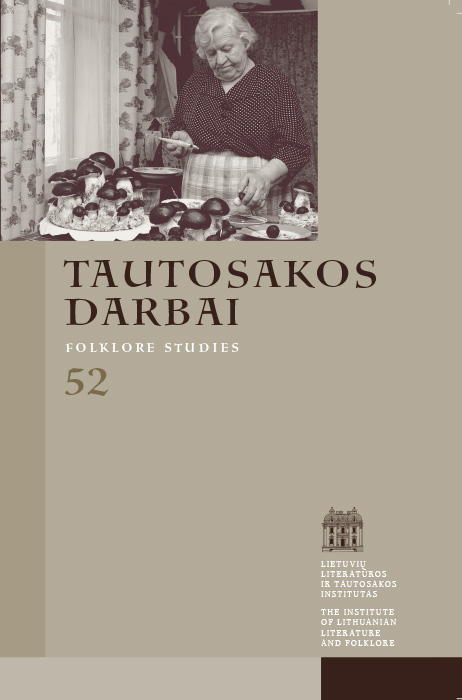Baladiškosios dainininkų (auto)biografijų paralelės
Santrauka
Straipsnyje, gvildenant liaudies baladžių ir kitų dainuojamųjų kūrinių prasmes, kreipiamas dėmesys ne tik į jų tekstus ar melodijas, bet ir į jų pateikėjų gyvenimo faktus. Nagrinėjamos kelios baladės, kitados Jono Balio priskirtos jaudinamosioms baladėms, kurių dėmesio centre atsiduria „nepamatuota mirtis“. Aptariamose baladėse aptinkami vadinamųjų marginalinių situacijų motyvai, vaizduojantys nekasdieniškas našlių, našlaičių gyvenimo problemas ir kitokias vargo apraiškas. Minint faktus iš dainininkų biografijų, nesiekiama jų išsamiai pristatyti, o tik pažvelgti į dainuojamus kūrinius jų pateikėjų tam tikrų gyvenimo įvykių šviesoje. Daroma prielaida, kad tų įvykių patirtis ir atmintis gali keisti baladžių recepciją; žvelgiant plačiau, tai (be kita ko) laikytina mūsų dienas pasiekusių baladžių andainykščiu kontekstu, šiandien padedančiu geriau jas suprasti.
Atsisiuntimai
Skaitomiausi šio autoriaus(ų) straipsniai
- Modesta Liugaitė-Černiauskienė, Žvilgsniai į lietuvių folklorinę baladę XX a. antroje pusėje , Tautosakos darbai: T 65 (2023): Tautosakos darbai
- Modesta Liugaitė-Černiauskienė, Jurga Sivickaitė-Sadauskienė, Pratarmė , Tautosakos darbai: T 65 (2023): Tautosakos darbai
- Modesta Liugaitė-Černiauskienė, Folklorinė baladė anapus žanrinio apibrėžtumo , Tautosakos darbai: T 63 (2022)
- Jurga Sadauskienė, Austė Nakienė, Rytis Ambrazevičius, Asta Skujytė-Razmienė, Radvilė Racėnaitė, Gražina Kadžytė, Modesta Liugaitė-Černiauskienė, Vita Džekčioriūtė-Medeišienė, Eligija Garšvienė, Kronika , Tautosakos darbai: T 54 (2017)
- Modesta Liugaitė-Černiauskienė, Jurga Sivickaitė-Sadauskienė, Foreword , Tautosakos darbai: T 65 (2023): Tautosakos darbai
- Modesta Liugaitė-Černiauskienė, Tremtinių, politinių kalinių dainavimas: liminalumo aspektas , Tautosakos darbai: T 61 (2021)
- Modesta Liugaitė-Černiauskienė, Pasaulio baladžių tyrėjų sambūris Vilniuje , Tautosakos darbai: T 57 (2019)
- Modesta Liugaitė-Černiauskienė, Baladės sakytinėje ir rašytinėje tradicijoje: tyrinėjimų retrospektyva , Tautosakos darbai: T 55 (2018)
- Modesta Liugaitė-Černiauskienė, Vandens prasmes baladėse apmąstant , Tautosakos darbai: T 50 (2015)
- Modesta Liugaitė-Černiauskienė, Baladė apie baudžiamą dukterį: interpretavimo perspektyva , Tautosakos darbai: T 48 (2014)
